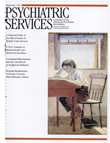A model for the classification and diagnosis of relational disorders. Committee on the Family, Group for the Advancement of Psychiatry
Abstract
Important and common relational conditions, such as severe couple dysfunction and family violence involving child or elder abuse, have been omitted from DSM-IV, the authors believe. They argue that such conditions can exist independently of severe individual psychopathology and that these conditions should be described in relational terms, with specific diagnostic criteria. They outline a classification of relational disorders and propose its addition to axis I of DSM-IV. This classification scheme focuses on severe family dysfunction; problems of living usually treated by couple and family therapists are intentionally omitted. Descriptions of two relational disorders, written in DSM style, are provided. The authors discuss implications for the treatment and rehabilitation of patients, the future training of psychiatrists, and the direction of research.
Access content
To read the fulltext, please use one of the options below to sign in or purchase access.- Personal login
- Institutional Login
- Sign in via OpenAthens
- Register for access
-
Please login/register if you wish to pair your device and check access availability.
Not a subscriber?
PsychiatryOnline subscription options offer access to the DSM-5 library, books, journals, CME, and patient resources. This all-in-one virtual library provides psychiatrists and mental health professionals with key resources for diagnosis, treatment, research, and professional development.
Need more help? PsychiatryOnline Customer Service may be reached by emailing [email protected] or by calling 800-368-5777 (in the U.S.) or 703-907-7322 (outside the U.S.).



